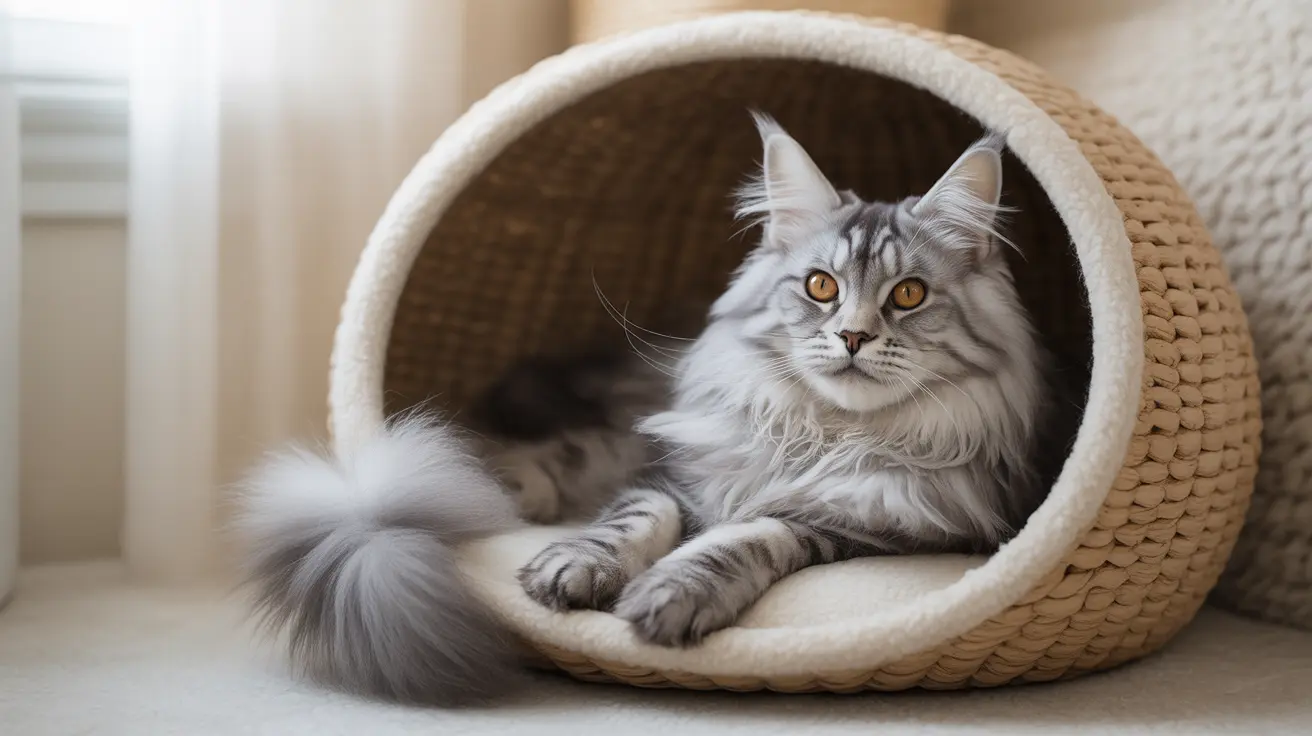Psychotropic Medication for Cats: A Comprehensive Guide to Safe Use and Natural Alternatives
As cat owners increasingly seek solutions for behavioral challenges in their feline companions, the use of psychotropic medication for cats has become a topic of significant interest and concern. While these medications can play a valuable role in managing severe anxiety and behavioral issues, they are not miracle cures and require careful consideration alongside comprehensive behavioral modification approaches.
Understanding when and how to use psychotropic medications safely, as well as exploring natural alternatives, is crucial for cat owners, veterinarians, and animal behaviorists. This comprehensive guide examines the realities of feline psychopharmacology, emphasizing that true behavioral change requires active human intervention rather than relying solely on pharmaceutical solutions.
Understanding Feline Behavior vs. "Behavioral Problems"
Many behaviors that owners perceive as "problematic" are actually normal feline responses to stress, unmet needs, or environmental challenges. Indoor cats, in particular, often experience stress due to their inability to express natural behaviors like hunting, territorial marking, and environmental exploration. This stress manifests in ways that may seem disruptive to human households but are entirely normal from the cat's perspective.
The term "behavioral problem" can be misleading because it suggests the cat is behaving abnormally when, in reality, miscommunication between cat and owner is often the root cause of conflicts. Cats behave instinctively, and what appears problematic to humans may be the cat's natural response to an inadequate living environment or stressful situation.
Identifying Natural Needs in Indoor Cats
To prevent stress-related behaviors, cat owners must recognize and fulfill their pets' natural needs. These include vertical territory through cat trees and shelving, multiple hiding spots for security, appropriate scratching surfaces, interactive play that mimics hunting, and environmental enrichment that stimulates their senses. When these needs go unmet, cats may develop anxiety, aggression, inappropriate elimination, or destructive behaviors.
The Role of Psychotropic Medications in Feline Behavior Therapy
Psychotropic medication for cats serves as an adjunctive tool rather than a standalone solution for behavioral issues. These medications work by reducing arousal, excitability, reactivity, and anxiety, but they do not directly teach new behaviors or resolve communication issues between cats and their owners. The primary goal is to improve the cat's emotional state enough to allow for effective learning and behavior modification.
In veterinary psychopharmacology, several classes of medications are used, including anxiolytics like benzodiazepines and buspirone, antidepressants such as SSRIs and tricyclic antidepressants, and mood stabilizers. However, accurate diagnosis, consideration of administration feasibility, potential drug interactions, and side effect profiles are essential before beginning any treatment protocol.
Off-Label Use and Regulatory Considerations
Most psychotropic medications used in cats involve off-label prescribing due to a lack of feline-specific studies or approvals. While clomipramine is licensed for urine spraying in cats in some countries, many other medications commonly used in feline behavior therapy lack official approval for cats. This reality requires veterinarians to carefully weigh the benefits and risks while ensuring proper medical oversight throughout treatment.
Common Psychotropic Medications Used in Cats
Daily Medications for Long-Term Management
For chronic anxiety and behavioral issues, daily medications with longer-term effects are typically prescribed. SSRIs like fluoxetine, paroxetine, and sertraline are commonly used with generally good tolerance in cats. Tricyclic antidepressants such as clomipramine and amitriptyline are also employed, though they have narrower safety margins and additional anticholinergic effects that require careful monitoring.
Azapirones like buspirone and MAOIs such as selegiline (primarily used for cognitive dysfunction) round out the daily medication options. These medications typically require several weeks to show full therapeutic effects and must be started at low doses with gradual adjustments.
Situational Medications for Acute Stress
For predictable stressful events or situational anxiety, rapid-onset medications may be more appropriate. Gabapentin has gained popularity for its anxiolytic and anticonvulsant properties, particularly effective for travel stress and veterinary visits. Trazodone, clonidine, certain benzodiazepines like lorazepam, and acepromazine can also provide situational relief when used appropriately.
Safety Considerations and Potential Risks
The safety profile of psychotropic medication for cats varies significantly between different drug classes. Benzodiazepines, particularly diazepam, carry a risk of fatal hepatic necrosis in cats and should be used with extreme caution. Some benzodiazepines may also inhibit learning and prove counterproductive in behavior therapy programs.
Common side effects across psychotropic medications include gastrointestinal signs, sedation, urinary retention, and rarely seizures. Age, health status, and individual sensitivity must be carefully considered when selecting medications. Monitoring for efficacy and side effects is vital throughout treatment, with medication trials conducted under close veterinary supervision.
Drug Interactions and Contraindications
Psychotropic medications can interact with other drugs, supplements, or underlying health conditions. Combining certain medications or switching between different classes requires careful planning and professional oversight. Transdermal preparations, while convenient, often have low bioavailability and present risks of ingestion by other animals or human family members.
Natural Alternatives and Supplements
For cats experiencing mild to moderate anxiety or as adjuncts to behavioral therapy, several natural alternatives show promise in supporting feline emotional well-being.
Nutritional Supplements
Alpha-casozepine, derived from milk proteins, has demonstrated anxiolytic effects and is available in products like Zylkene. L-Tryptophan, a serotonin precursor, can support relaxation and reduce anxiety, particularly during stressful events. Probiotics designed for anxiety management, such as Purina Calm Care, work through the gut-brain connection to influence mood and stress responses.
Products containing serotonin precursors, like Solliquin, combine multiple calming ingredients to provide comprehensive anxiety support. These supplements generally have excellent safety profiles and can be used long-term or situationally.
Plant-Based Remedies
Certain plant extracts have shown anxiolytic effects in cats. St. John's Wort, lavender, and passionflower are incorporated into various commercial products designed for feline anxiety. While these natural options are generally safer than pharmaceutical interventions, they still require proper dosing and monitoring for effectiveness.
Synthetic Pheromones
Synthetic feline pheromones simulate natural social scent signals that cats use for communication and comfort. F3 and F4 pheromones are available as sprays, diffusers, and collars, designed to enhance well-being and reduce tension or aggression. These products work by triggering natural calming responses and can be particularly effective when combined with environmental modifications and behavior therapy.
Integrating Medication with Behavior Modification
Successful feline behavior therapy rarely relies on medication alone. The most effective approaches combine appropriate pharmaceutical intervention with comprehensive environmental management and behavior modification techniques. Medications should facilitate learning and reduce anxiety enough for cats to engage with new training protocols and environmental enrichments.
Working with Professionals
Behavior modification requires committed owners working alongside veterinary behaviorists or certified feline behavior consultants. These professionals can assess the cat's specific needs, design appropriate intervention strategies, and determine whether psychotropic medication might enhance the therapeutic process.
Environmental Modifications
Creating an enriched environment that meets cats' natural needs is fundamental to addressing behavioral issues. This includes providing adequate vertical space, multiple resource locations, appropriate substrate options, and regular interactive play. Environmental modifications often prove more effective than medication alone in resolving behavioral challenges.
Administration Challenges and Solutions
One significant challenge in feline psychopharmacology is medication administration. Many psychotropic drugs have bitter tastes that cats find objectionable, leading to poor compliance and treatment failure. Successful administration often requires masking medications in capsules, treats, or specially formulated liquid preparations.
Working with compounding pharmacies to create palatable formulations can significantly improve treatment success. Some cats may accept transdermal preparations, though bioavailability concerns limit their effectiveness for many medications.
Monitoring and Long-Term Management
Cats receiving psychotropic medications require ongoing monitoring for both efficacy and adverse effects. Initial medication trials should involve frequent check-ins to assess individual responses and adjust dosing as needed. Long-term use necessitates periodic re-evaluation to ensure continued benefit and monitor for potential side effects.
Weaning off medications should be gradual to prevent withdrawal symptoms or behavioral relapse. Some cats may require long-term pharmaceutical support, while others can transition to supplement-based management or behavioral modification alone once initial progress is achieved.
When to Consider Psychotropic Medication
The decision to use psychotropic medication for cats should consider multiple factors including behavior severity, predictability of triggers, risk to the cat or family members, quality of life impact, and response to initial behavioral interventions. Medications are most appropriately used when behavioral issues significantly impair the cat's welfare or human-animal bond, when safety concerns exist, or when initial behavior modification efforts have proven insufficient.
Veterinarians must evaluate the complete environmental context, not just the presenting behaviors, to determine whether pharmaceutical intervention is warranted. Using medication to compensate for inadequate living conditions or unaddressed environmental stressors is inappropriate and unlikely to achieve lasting behavioral improvement.
Frequently Asked Questions
- Q: Are psychotropic medications safe for long-term use in cats?
When properly prescribed and monitored by a veterinarian, many psychotropic medications can be safely used long-term in cats. However, regular monitoring for side effects and efficacy is essential, and some medications carry greater risks than others. SSRIs generally have better long-term safety profiles compared to benzodiazepines or tricyclic antidepressants.
- Q: How long does it take for psychotropic medications to work in cats?
Most daily psychotropic medications require 4-8 weeks to reach full therapeutic effect, though some cats may show improvement within 2-3 weeks. Situational medications like gabapentin typically work within 1-2 hours. Starting with low doses and gradually increasing helps minimize side effects while achieving therapeutic benefits.
- Q: Can I use human antidepressants for my cat?
Never give human medications to cats without veterinary supervision. Many human psychotropic drugs are toxic to cats, and dosing requirements differ significantly between species. Even medications that are safe for cats require specific dosing, monitoring, and administration protocols that only veterinarians can provide.
- Q: What natural alternatives work best for anxious cats?
Alpha-casozepine supplements, synthetic pheromone diffusers, and environmental enrichment often provide effective anxiety relief for many cats. Combining these approaches with behavior modification techniques frequently achieves better results than any single intervention alone. The most effective natural approach varies by individual cat and specific anxiety triggers.
- Q: Should I try medication or behavior modification first?
Behavior modification and environmental management should typically be attempted first, unless the cat's behavioral issues pose immediate safety risks or severely compromise quality of life. Medication works best when combined with behavioral interventions rather than used as a standalone solution.
- Q: How do I know if my cat needs psychotropic medication?
Consider medication when behavioral issues significantly impact your cat's welfare, create safety concerns, persist despite appropriate environmental modifications, or prevent the cat from engaging with behavior modification efforts. A veterinary behaviorist can help evaluate whether medication might benefit your cat's specific situation.
- Q: Can psychotropic medications cure my cat's behavioral problems?
Psychotropic medications rarely cure behavioral issues but can reduce anxiety and reactivity enough to allow effective behavior modification. True behavioral change requires addressing underlying causes through environmental management, training, and sometimes ongoing pharmaceutical support to maintain progress.
Conclusion
Psychotropic medication for cats represents a valuable tool in the comprehensive management of feline behavioral challenges, but it is not a standalone solution. The most successful outcomes occur when appropriate pharmaceutical intervention supports broader behavior modification efforts that address underlying causes of stress and anxiety. Understanding the limitations, risks, and appropriate applications of these medications helps ensure they are used responsibly and effectively.
Whether choosing pharmaceutical or natural approaches, the goal remains the same: improving feline welfare through thoughtful intervention that respects cats' natural behaviors while creating harmonious human-animal relationships. Working with qualified professionals, maintaining realistic expectations, and committing to comprehensive treatment approaches offers the best hope for lasting behavioral improvement in our feline companions.






